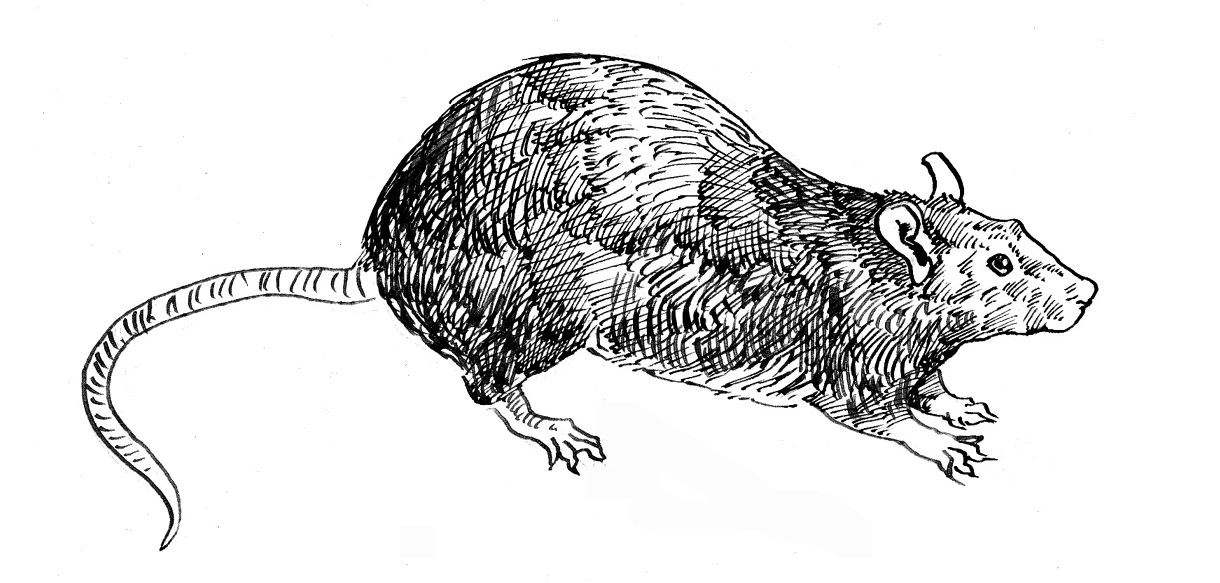
The Tree Climber’s Guide
I break out into Rocks Lane Field and then back to the treeline where the brook lies concealed. Stepping into a hidden clearing, the bankside is a warren of exposed roots. I climb an ash straight as a flagpole to get a better view of this intricate carpet. Below, the brook is fast-flowing back out to the river and the sea, and the sandy bottom is yellow in the afternoon sun. Two seagulls wheel overhead before turning east.
This secluded haven is the perfect schoolboy’s hangout, a place to smoke stolen cigarettes and play cards. Where the brook disappears under Rocks Lane it’s worth turning south behind the adjacent tennis courts to explore the remains of Old Barnes Common Cemetery. In among a host of beheaded angels and fallen crosses is a stand of tall yew trees, shedding their poisonous crop of leaves on the dear departed.
The Old Mill, Ravensbourne River
Fagus sylvatica ‘Purpurea’/Copper beech
Crossing over the bridge from Coldbath Street Estate, I catch my first sight of the Ravensbourne. Although it passes through the arse end of Deptford Creek on every tide, the river runs clear in a high-walled channel through Brookmill Park. Alongside, the tracks of the Docklands Light Railway hug the embankment on their way south.
I follow a path along the bank and pass a mighty three-pronged plane rising from a lawn by the playground. The fat bole has something stuffed into a crevice at head height. Curious, I walk over to find a tree fungus spreading inside the trunk like foam filler.
At the north end of Brookmill stands a copper beech, hard by the riverside. I grab the lowest branch and struggle clockwise around the trunk, before lifting myself through a tangle of limbs. Higher up, a curling horn of a branch provides a useful hook to rest on.

The river seen from the air seems low in its concrete channel, running back towards the Thames. Lumps of wall from some bygone structure sit deep in the silt, and ripples appear around them, dragging against the current. On the far side I glimpse the red-brick vault of the James Engine House through the leaves, an imposing Victorian pumping station.
Brookmill’s ornamental gardens fan out to the west. The herringbone brick paths run towards a round pool with a fountain at its centre, the water conceivably drawn from the river itself. The park is deserted and no one sits on the red tubular benches that look like the requisitioned hand rails of old Central Line carriages.
Climbing as far as the branches will permit, I find an arcane symbol hacked with a knife into the uppermost part of the trunk. The pattern is impossible to decipher, more hieroglyph than 21st-century tag. I wonder how long it’s been here and whether this old scar has shifted with time, the bark contorting in its annual growth cycle. Lichen proliferates where the blade incised the tree, colouring the hewn bark a gaudy yellow.

Descending, I place my hand in a kind of double arch in the wood, one inverted on top of the other like the famous scissor divide in Wells Cathedral. The interior of the beech is a labyrinth and I slip back to the ground as if through a ball of wire mesh.
As I retrace my steps along the bank two morbidly obese rats cross my path. They bob out of sight behind a fence, off to pay homage to their king.
The Crow’s Nest, King Edward VII Memorial Park
Alnus glutinosa/Common alder
In Shadwell one winter’s evening before sundown I find a lofty alder by the riverbank. Dwelling in a corner of the King Edward Memorial Park, the tree borders the Thameside walkway and its roots ply the river water itself, seeping through the mortar of the embankment wall.
Ducking behind the park bandstand and a row of shrubs, I pause at the alder’s foot. A single long branch curls out over my head and I follow it to the point where it strays closest to the ground. I leap to catch it, and a desperate arm wrestle with the tree ensues. Climbing hand over hand, I try to swing a leg over the branch, finally gaining the relief of the trunk.
The bark above me is covered by a black film, the residue of the dual carriageway that thunders north of the park. As I climb, the river plays out between bare branches. The last light burnishes the water silver and sets small fires in the windows of Dockland towers.
Soon the ground has become nothing more than a glimpse of shadow, and the view is opening on all sides. I pass two bird boxes pinned to the trunk, then draw level with the highest balcony of a riverside block of flats. Resting beneath the last branch, I imagine myself the lookout on a tall ship. Perched here it’s easy to indulge in maritime fantasies, replacing passing Thames Clippers with the steamboats of yesteryear and the clear evening with a thick morning smog. The alder shifts beneath me, a rolling ship heavy with foreign cargo. I imagine sailing out to sea, perhaps in the company of Conrad. ‘We live in the flicker – may it last as long as the old earth keeps rolling!’ So speaks Marlow, afloat on the Thames in the opening chapter of Heart of Darkness. He refers to the passing ages of London, the brief moments of civilisation between long years of wilderness. From the tree top the climber can envisage a different landscape, composed of nothing more than marsh.

I turn west, and the fantasy evaporates; the megaliths of Bishopsgate stalk the skyline and the Gherkin seems close enough to reach out and polish. Descending from my panoramic seat, I glimpse a commuter crossing the park, waving with one hand, a phone in the other. From this vantage all human gestures seem exaggerated and the man is just another player in the pantomime.
The Sidewinder, Hertford Union Canal
Quercus cerris/Turkey oak
Drizzle tries to pockmark the canal, a greasy surface film repelling the rain. As I tramp along the tow path, everything seems to bleed into the water. Behind the iron railings bounding the canal, tall trees stalk the fringe of Victoria Park: planes, willows and horse chestnuts. They stand to attention, upright and aloof, offering not one branch to the waterside.
I turn back at a bridge with ‘Arse’ scrawled across the arch in lollipop red, before catching sight of a great crossbar of a tree, a large oak growing at an acute angle to the ground. I hop the fence to take a closer look.
The climb is straightforward but the rain has rendered the bark black and slippery, and the angle steepens as I ascend. The oak’s rough contours create just enough friction to cling on, a good choice for a wet day. I slither up like a snail, chest to the tree, terrified of spinning under the sodden trunk and falling on my back.
Reaching the stunted canopy, I am wearing a merman’s clothing, a dark green lather covering my hands and jeans. The oak’s branches form a square border beneath my feet, perfectly framing a patch of grass twenty feet below. Level with my nose, a bunch of acorns hangs between the leaves; their deep cups are covered with overlapping scales, a hallmark of the Turkey oak.

Something crosses my hand and disappears into a crevice in the wood. When climbing trees I often get the sense that I’ve just missed their other occupants, half-seen creatures that burrow back into the trunk as my shadow crosses them. They inhabit vast sub-cities, beyond the realm of human sight and hearing.
Perched on my summit branch the angle of the tree makes me feel exposed, like being offered up on a spoon to some passing giant. Out on the water, puffs of wood smoke drift up from a line of canal boats, their owners conversing in signal plumes. A wide barge, barely contained by the channel, is pushed past by a small grey tug, jugging along with its helmsman half-asleep by the wheel. Rain begins to pool on my lap and I climb down to find my own fireside.
The Golden Fleece, Little Venice
Liriodendron tulipifera/Tulip tree
Two canals meet in Little Venice, and at their junction the clean-bordered lawn of Rembrandt Gardens drops to the water’s edge. Spreading across the southern end is a tall tulip tree. At the tail end of October its notched leaves are a cascade of liquid gold, turning the tree into a glowing tower.
Конец ознакомительного фрагмента.
Текст предоставлен ООО «ЛитРес».
Прочитайте эту книгу целиком, купив полную легальную версию на ЛитРес.
Безопасно оплатить книгу можно банковской картой Visa, MasterCard, Maestro, со счета мобильного телефона, с платежного терминала, в салоне МТС или Связной, через PayPal, WebMoney, Яндекс.Деньги, QIWI Кошелек, бонусными картами или другим удобным Вам способом.
Вы ознакомились с фрагментом книги.
Для бесплатного чтения открыта только часть текста.
Приобретайте полный текст книги у нашего партнера:
Всего 10 форматов

